10,400 Candidates Complete First Day of 2023 Bar Exams; A Lively Day for the Bar Chair
September 18, 2023
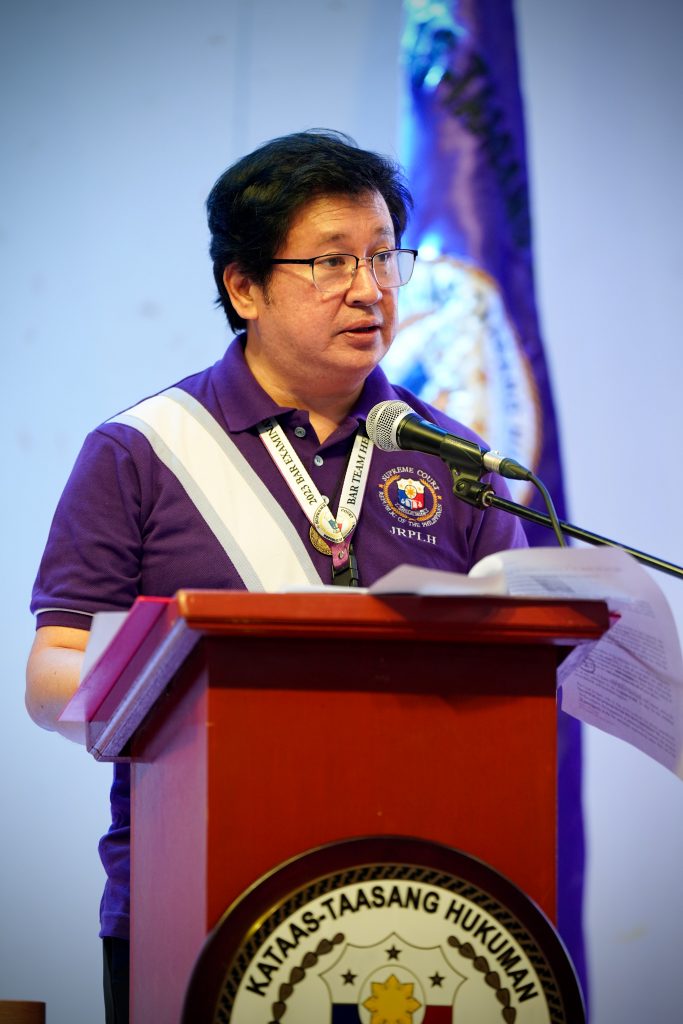
Supreme Court Associate Justice Ramon Paul L. Hernando, Chairperson of the 2023 Bar Examinations
Out of the 10,791 Bar applicants expected to arrive for the 2023 Bar Examinations, 10,400 candidates braved and completed both tests given, equivalent to a 96.38% turnout, during the first day of the 2023 Bar Examinations on September 17, 2023.
Supreme Court Associate Justice Ramon Paul L. Hernando, Chairperson of the 2023 Bar Examinations, announced that the release of the results of this year’s Bar Examinations as well as the oath-taking and signing of the Roll of Attorneys, will be held before Christmas Day.
“A smashing success”
Justice Hernando’s assessment of the first day of the 2023 Bar Examinations: “I am proud to say that the first day of the 2023 Bar Examinations is a smashing success. The Court and its 2,310-strong Bar personnel have vigilantly stood watch over our 2023 Bar Examinees and ensured the safe, peaceful, and orderly conduct of the exams. Let us all hope and pray that this would continue until the last day of the Bar.”
“To all of my 2023 Bar Examinees, I salute you for powering through the first Bar day. There are only two Bar Examination days left. You can do it! I look forward to warmly welcoming you to our profession before Christmas day.”
Justice Hernando, who personally led and directed the conduct of the digitalized and regionalized Bar Examinations from the 2023 Bar National Headquarters at the San Beda College Alabang in Muntinlupa City, said the existing Bar policies were results of thorough consultations between the Supreme Court, through the Office of the Bar Chair, and law school deans and legal experts.
The traditional month-long exams purportedly had been “physically draining, emotionally nerve-racking, and financially devastating, considering the costs of adapting to the venues of the Bar examinations” which led to a clamor not only to shorten the four examination days but also “to reduce the coverage only to the legal essentials.”
Bar Team Hernando modified and streamlined the schedule and conduct of the 2023 Bar Examinations in a way that will “gauge the examinee’s logical reasoning, knowledge and application of fundamental principles of law, ability to analyze and solve legal problems, and deftness to communicate in precise language.”
On Day 1, the morning exam was Political Law and Public International Law, while the afternoon exam was Commercial and Taxation Laws.
Bar Team Hernando further decided to expedite the entire proceedings of the examinations by holding the same in September.
The early release of the results of the 2023 Bar Exams was also confirmed by Justice Hernando when he held a press conference on the morning of the first exam day. “This year, however, following the examples of my recent predecessors as Bar Chair, the time spent by the Examinees waiting in agony for the results of the exams will be cut short: my team and I are eyeing the release of the results of the 2023 Bar Examinations in early December before Christmas day. The results will, God-willing, come out in early December, before Christmas day,” said Justice Hernando.
Justice Hernando disclosed that the Court shall hold the simultaneous oath-taking and on-site signing of the Roll of Attorneys of the successful Bar applicants before Christmas Day. “The idea, therefore, is for the Bar passers to join the legal profession in the same year they graduate from law school,” Justice Hernando explained.
Justice Hernando expressed his hopes that the compressed Bar exam schedule will be “a push for students to fully equip themselves for
the Bar examinations before graduation,” an “opportunity for earlier employment,” a “preservation of examinees’ mental health” since a shorter Bar review period means less time and energy for examinees to worry about the same; and an “accelerated professional growth and contribution to society” since it will allow the newly-minted lawyers to begin their professional growth earlier.
“Today, I have nothing but gratitude”
At yesterday’s Breakfast with the Deans, an established tradition held on the first day of each year’s Bar Exams, Justice Hernando warmly thanked all the crucial personages helping in the 2023 Bar Examinations.
Justice Hernando shared how he and the rest of “Bar Team Hernando” carefully mapped out the details of this year’s Bar exams, which shortened to three days the usual four Sundays of the country’s professional licensure examinations for future lawyers. The Breakfast was held at St. Maur’s Hall of San Beda College Alabang, the National Headquarters of the 2023 Bar Examinations.
“I emphasize that our Bar reforms were never formulated on a whim,” said Justice Hernando, who acknowledged the pioneering works of the previous Bar Chairs “who have always been our guideposts, bearing in mind the continuously-evolving Strategic Plan for Judicial Innovations.”
He also conveyed his gratitude to Chief Justice Alexander G. Gesmundo and the other Members of the Court for their “unfailing, unconditional, and boundless support.”
Chief Justice Gesmundo, who also spoke during the Breakfast with the Deans, reiterated that the country needs “need not just more lawyers but more lawyers with a social conscience” who will “genuinely work for social justice, putting the interest of the marginalized, vulnerable sectors and individuals first, over personal interests and parochial concerns- lawyers.”
Justice Hernando acknowledged the invaluable assistance of all the heads of law schools, the Philippine Association of Law Schools, and the Legal Education Board, all of whom the Office of the 2023 Bar Chair has intensely collaborated with for the past year.
“I sincerely hope that the Office of the 2023 Bar Chair was able to adequately address your concerns, as, since Day 1, you all have been one with us in rallying for the best interests of our Bar examinees. Please know that our Bar Team received your requests to heart and tackled them with the utmost of our abilities, and that we very much appreciate all of your efforts,” said Justice Hernando.
He also thanked the various offices of the Supreme Court, the San Beda College Alabang for serving as this year’s National Headquarters, and all those who have extended their help and support for the conduct of the 2023 Bar Examinations.
Joining Justice Hernando in the Breakfast were Chief Justice Gesmundo, Senior Associate Justice Marvic M.V.F. Leonen, Justice Alfredo Benjamin S. Caguioa, Justice Amy C. Lazaro-Javier, Justice Henri Jean Paul B. Inting, Justice Rodil V. Zalameda, Justice Mario V. Lopez, Justice Samuel H. Gaerlan, Justice Ricardo R. Rosario, Justice Jhosep Y. Lopez, Justice Japar B. Dimaampao, Justice Jose Midas P. Marquez, and Justice Maria Filomena D. Singh. Law school Deans, for whom the annual event was instituted, and other government officials, were also in attendance.
All announcements regarding the 2023 Bar Examinations may be viewed on its microsite at the Supreme Court website: https://sc.judiciary.gov.ph/bar-2023/. (Courtesy of the Supreme Court Public Information Office)
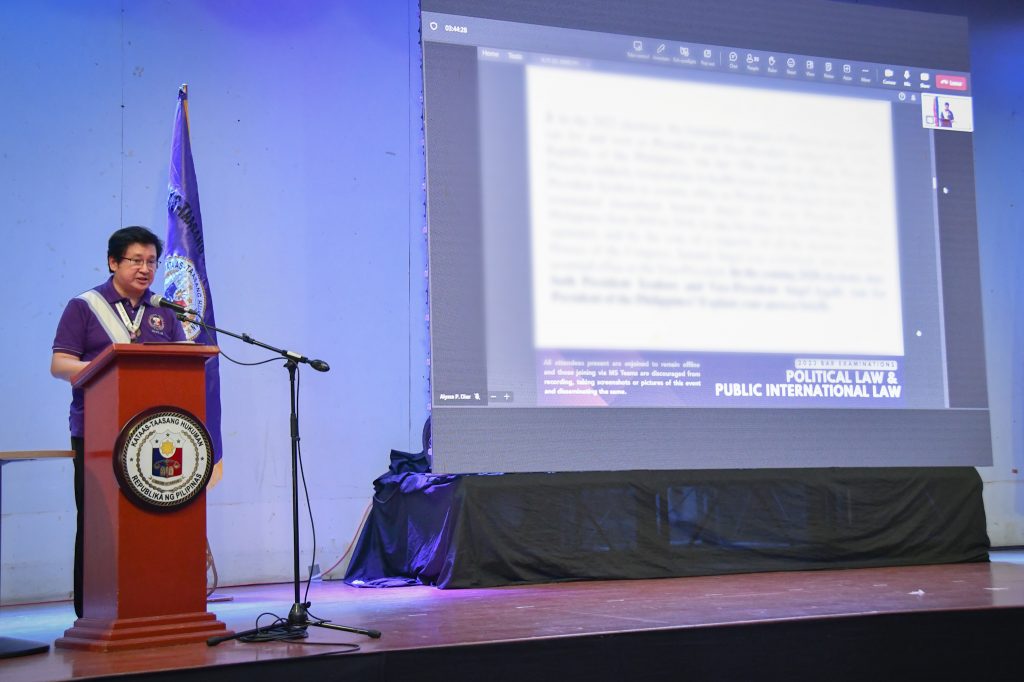
Supreme Court Associate Justice Ramon Paul L. Hernando, 2023 Bar Examinations Chair, presents the Bar questions in Political and Public International Law to the law school deans during the traditional Breakfast with the Deans at San Beda College Alabang’s St. Maur Hall on Day 1 of the Bar exams on September 17, 2023. This Bar tradition is held every first day of the annual professional licensure exams for future lawyers. (Courtesy of the Supreme Court Public Information Office)
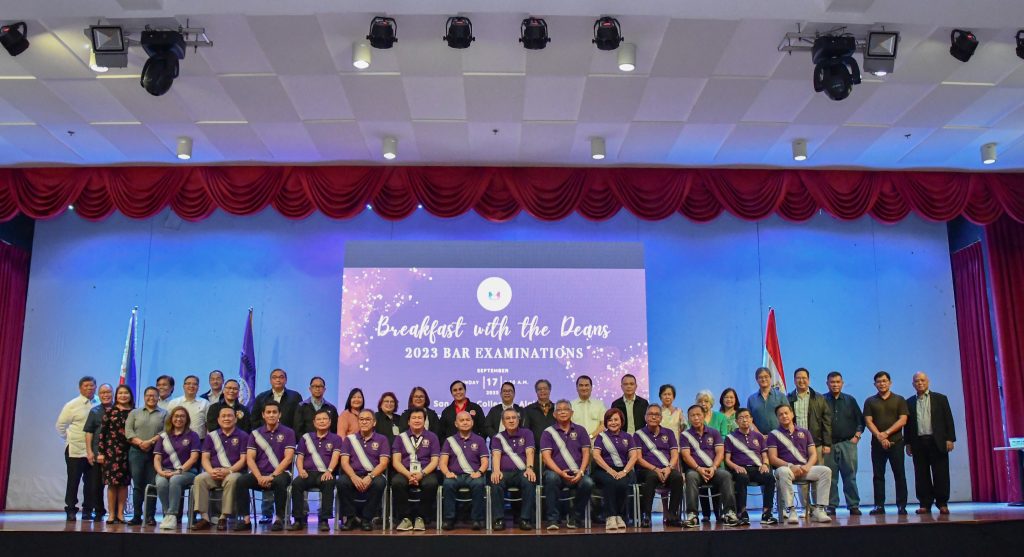
The Members of the Supreme Court (seated) pose for posterity with the law school deans, including those from schools which serve as local testing centers of the 2023 Bar Examinations. (Courtesy of the Supreme Court Public Information Office)
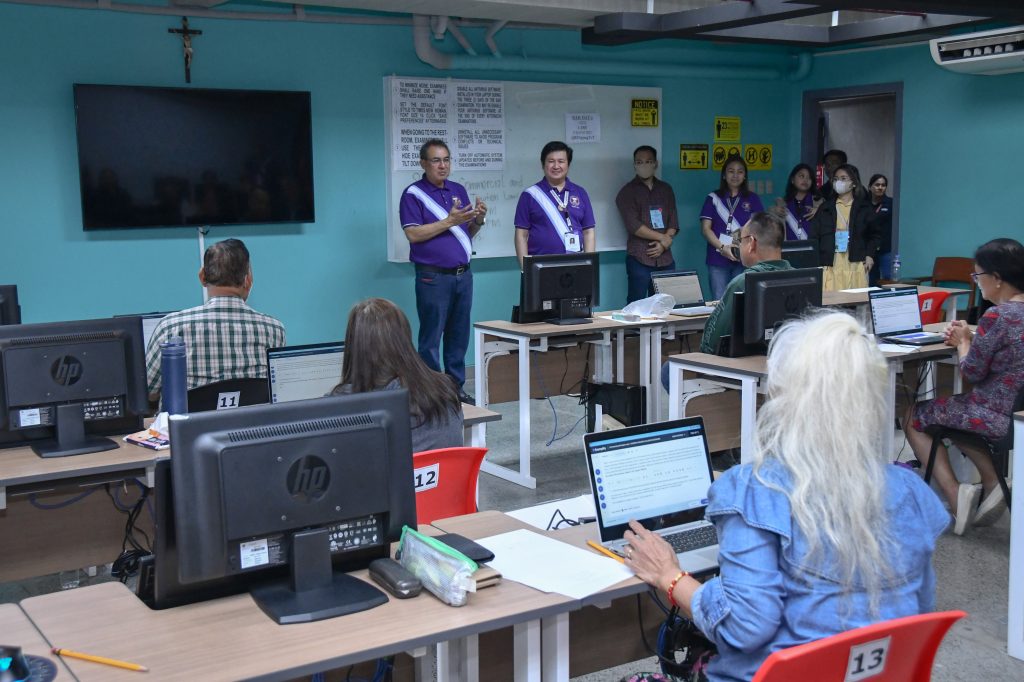
Chief Justice Alexander G. Gesmundo and Associate Justice Ramon Paul L. Hernando, 2023 Bar Examinations Chair, share words of encouragement and inspiration to the examinees at the San Beda University local testing center in Manila on Day 1 of the Bar exams on September 17, 2023. (Courtesy of the Supreme Court Public Information Office)
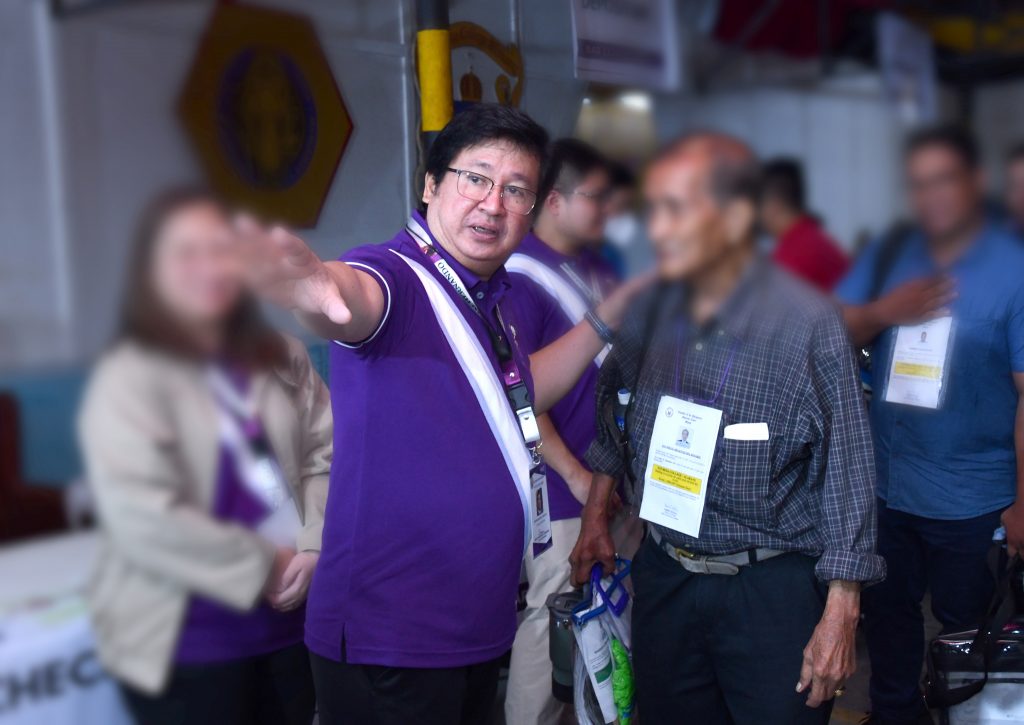
Supreme Court Associate Justice Ramon Paul L. Hernando, 2023 Bar Examinations Chair, shares a moment with an 86-year-old examinee, the oldest of this year’s batch of Bar applicants, at the local testing center in San Beda College Alabang (SBCA) on September 17, 2023, Day 1 of the exams. The SBCA serves as the National Headquarters of the 2023 Bar Examinations. (Courtesy of the Supreme Court Public Information Office)
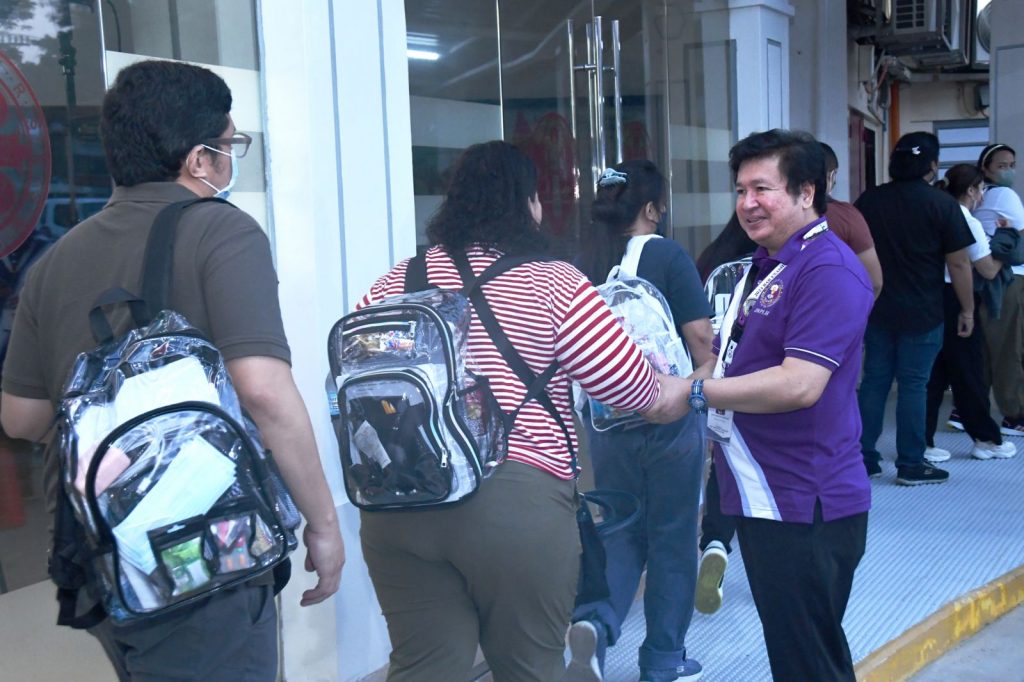
Supreme Court Associate Justice Ramon Paul L. Hernando, 2023 Bar Examinations Chair, welcomes examinees as they arrive at the local testing center in San Beda College Alabang (SBCA) on Day 1 of the exams on September 17, 2023. The SBCA serves as the National Headquarters of the 2023 Bar Exams. (Courtesy of the Supreme Court Public Information Office)
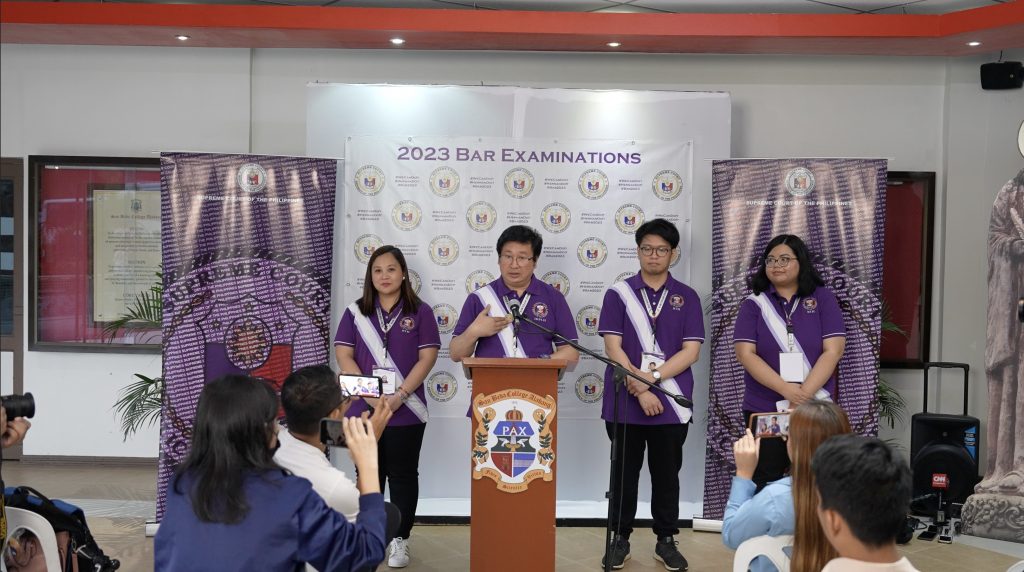
Supreme Court Associate Justice Ramon Paul L. Hernando, 2023 Bar Exams Chairperson, meets with the members of the media for a press briefing at the 2023 Bar National Headquarters in San Beda College Alabang on September 17, 2023, Day 1 of the professional licensure exams for future lawyers. With Justice Hernando are (from left) Bar Head Atty. Ma. Theresa Carmina E. Vivar-Lising and Deputy Bar Heads Atty. Jose Maria E. Santos and Atty. Pamela Marie T. Marcelo, all from the Office of the 2023 Bar Chair. (Courtesy of the Supreme Court Public Information Office)
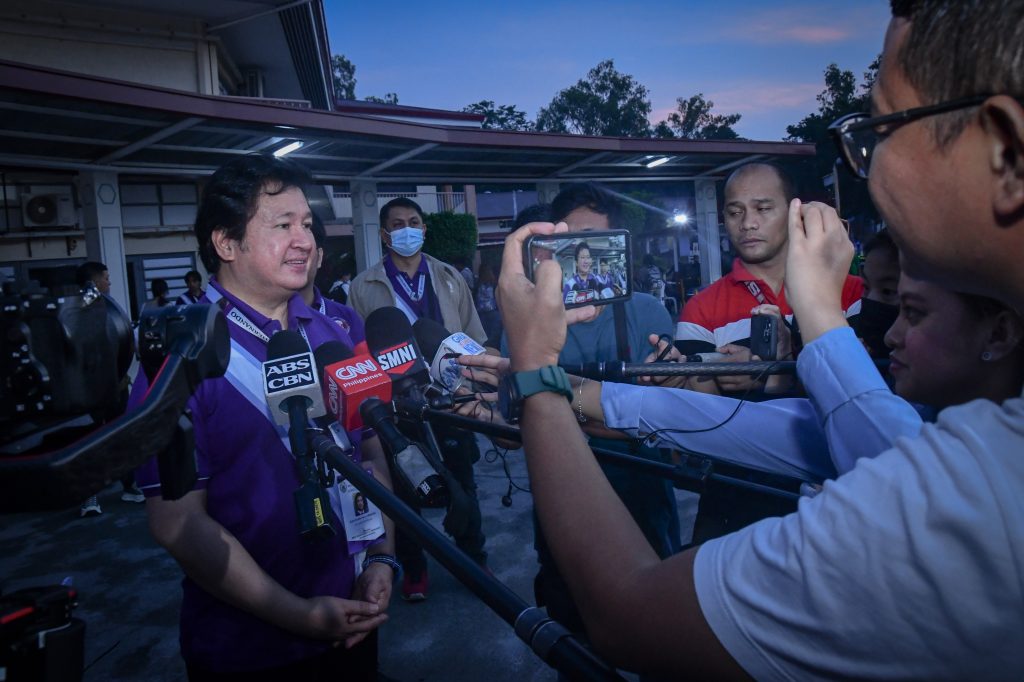
Supreme Court Associate Justice Ramon Paul L. Hernando, 2023 Bar Examinations Chair, answers queries from the members of the media during a press briefing held two hours before the start of the first day of the examinations on September 17, 2023, at the San Beda College Alabang local testing center. (Courtesy of the Supreme Court Public Information Office)
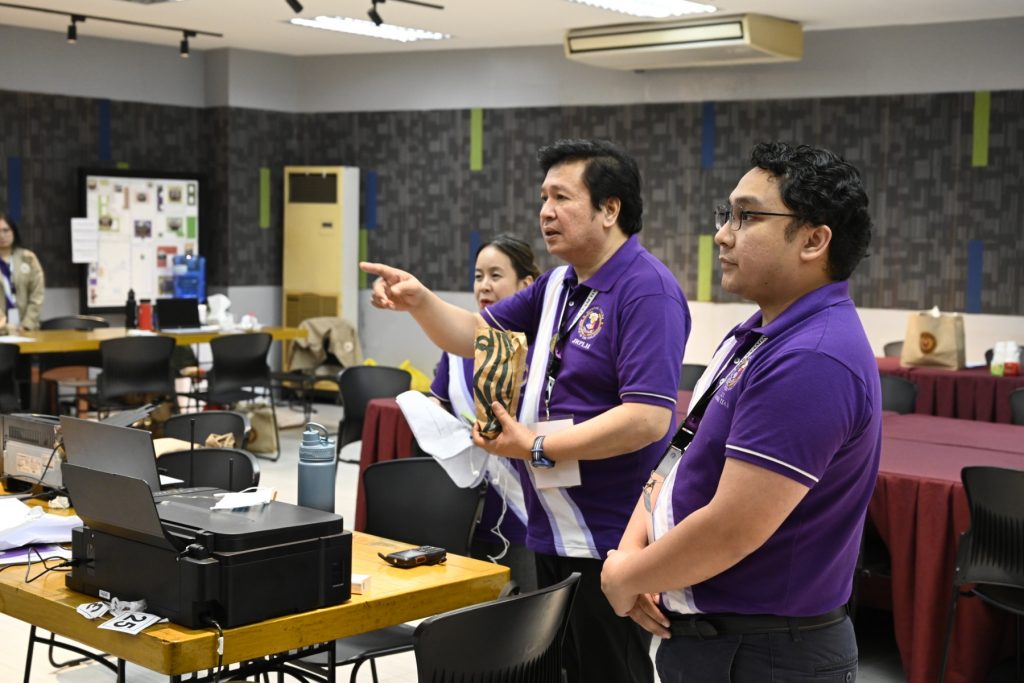
Supreme Court Associate Justice Ramon Paul L. Hernando (center), 2023 Bar Examinations Chair, gives instructions to the Bar personnel assigned at the local testing center in the Pontifical and Royal University of Santo Tomas in Manila on September 17, 2023, the first day of the professional licensure exams for future lawyers. (Courtesy of the Supreme Court Public Information Office)












